A great solemnity has this day risen upon our earth: a feast both to God and to men: for it is the feast of Christ the Mediator, who is present in the sacred Host, that God may be given to man, and man to God. Divine union—such is the dignity to which man is permitted to aspire; and to this aspiration God has responded, even here below, by an invention which is all of heaven. It is to-day that man celebrates this marvel of God’s goodness—Dom Guéranger

Before Pope Urban IV signed a papal bull in 1264, declaring the Thursday after the Pentecost octave to be the feast of Corpus Christi, lay groups across Europe were already promoting the feast, which was first celebrated in 1246 in the town of Liege. The Norbertine nun from Belgium, sister Juliana of Liege (d. 1258), took up the cause with Urban IV, long before he became pope.1
Although the papal bull did not dictate that a procession should follow Mass, processions almost immediately became an essential part of the Corpus Christi feast.2 The procession helps symbolically link the joyful feast celebrating the Eucharist to the more sorrowful commemoration of the institution of the Eucharist on Holy Thursday. Aquinas’s Pange Lingua is also sung during both processions. In a homily for the feast, Pope Benedict XVI explains the way the processions link and complement each other.
On the feast of Corpus Domini, the Church relives the mystery of Holy Thursday in the light of the Resurrection. There is also a Eucharistic procession on Holy Thursday, when the Church repeats the exodus of Jesus from the Upper Room to the Mount of Olives...
In the Holy Thursday procession, the Church accompanies Jesus to the Mount of Olives: it is the authentic desire of the Church in prayer to keep watch with Jesus, not to abandon him in the night of the world, on the night of betrayal, on the night of the indifference of many people…
On the feast of Corpus Domini, we again go on this procession, but in the joy of the Resurrection. The Lord is risen and leads us. In the narrations of the Resurrection there is a common and essential feature; the angels say: the Lord “goes ahead of you to Galilee, where you will see him” (Mt 28: 7)…
The Holy Thursday procession accompanies Jesus in his solitude towards the via crucis. The Corpus Domini procession responds instead in a symbolic way to the mandate of the Risen One: I go before you to Galilee. Go to the extreme ends of the world, take the Gospel to the world.3
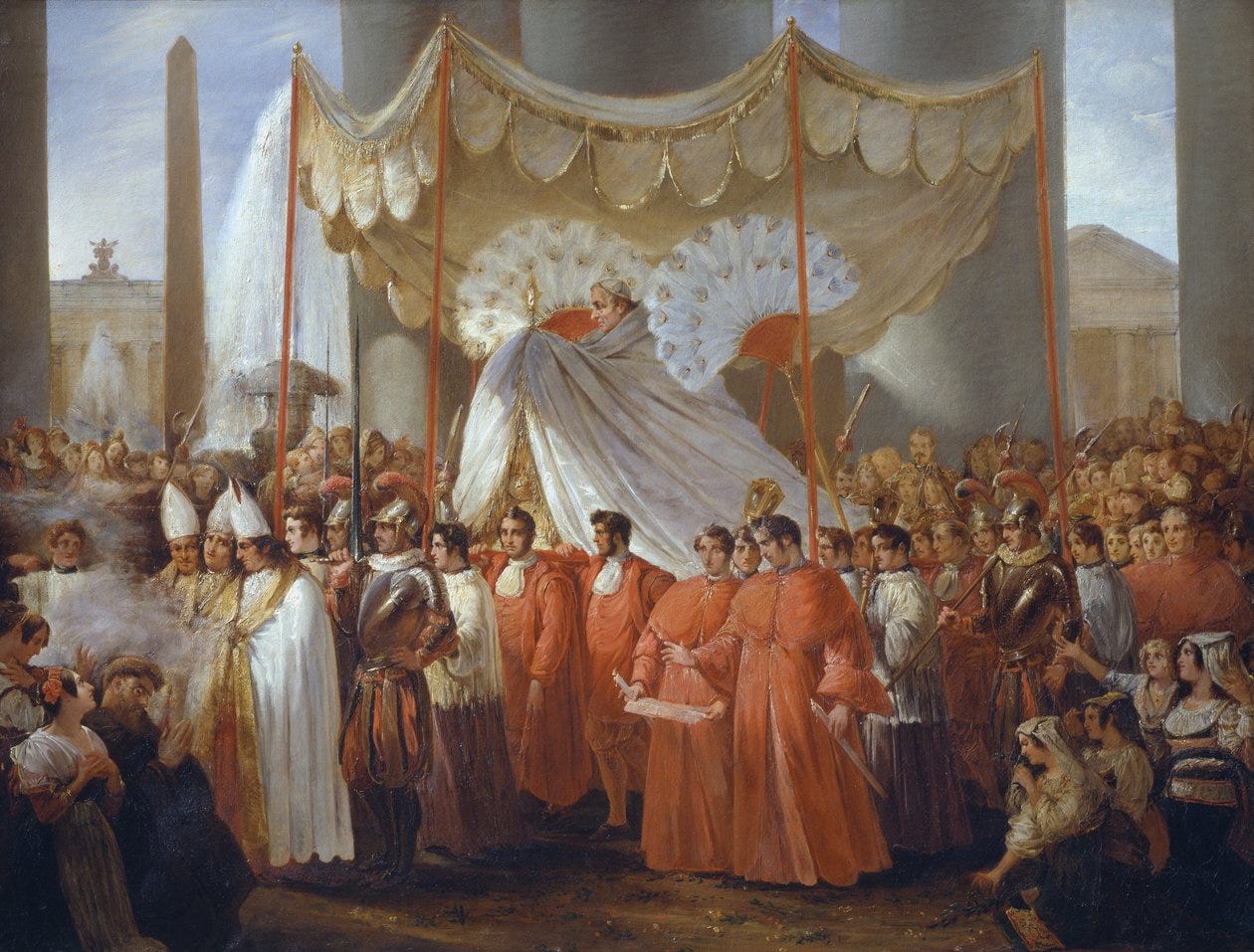
After Urban IV died in 1264, the next 13 popes ignored his bull; however celebrations of the feast had already begun to take hold across Bavaria, in Venice and with the Dominicans. Pope John XXII restored Corpus Christi to the universal calendar in 1317 and subsequent popes embraced and encouraged the processions, which quickly spread across Europe.4
In The Stripping of the Altars, Eamon Duffy describes the way the laity eagerly embraced the feast in England:
Observed in England from 1318 and seized on by the authorities as an occasion for the promotion of both charity and Christian catechesis, the feast rapidly won popular allegiance. Its progress in lay affections can be traced in the fourteenth and fifteenth centuries by the foundation and spread of Corpus Christi gilds to honour the Host as it was carried in procession, and the emergence of the Corpus Christi processions as major civic events.
Craft gilds and urban corporations saw in the ritual order of the great processions associated with the feast an opportunity for civic and social iconography, the display of piety an opportunity for the display of the worship and the social clout of those involved.
In Tudor York it was required that "for the honour of god and worship of this Citie" the citizens whose houses lay along the route of the procession with the Host should "hang before ther doores and forefrontes beddes and coverynges of ebeddes of the best that thay can gytt and strewe before ther doores resshes and other such flowres... for the honour of god and worschip of this Citie."
Particularly in urban parishes Corpus Christi became a focus of elaborate ceremonial and lavish expenditure on banners, garlands, lights: the gilds, not the clerks, took over the management of the processions.5
Whole towns participated in the festivities, spending weeks preparing banners, making candles, decorating houses, rehearsing musical pieces, arranging flowers and wreathes, and sewing lace and fine garments for the event. Little boys would serve as acolytes or sing in the choir, and girls would dress as angels or brides, leading the procession, preparing the way for the King and welcoming him as the angels did at the Ascension.
In some places, the laity made carpets of flowers for Christ in the Eucharist to pass over, and little girls scattered flower petals at the front of the procession, reminiscent of how palms are used in the Palm Sunday procession.6 The children and the religious paved the way for the priest, who held up the Host in a large gold monstrance, covered by a kingly canopy, a reminder of Christ’s divine kingship and victory on the cross.
To medieval villagers, who were keen on seeing liturgical celebrations symbolically and allegorically, the Corpus Christi procession was many things—an invocation of God’s protection against evil, a pilgrimage to heaven, a kingly triumph, a bridal march to the wedding feast of the Lamb, a blessing, a proclamation of the Gospel to the four corners of the earth, a festive thanksgiving, a walk through the life of Christ, a visible sign of Christ with us, an occasion for adoration, an anticipation of Christ’s second coming, an indulgence, a reflection of the Glory of God, a sign of unity, and finally a call to conversion. As St Leo the Great preached, “our participation in the Body and Blood of Christ aspires to nothing other than to become what we receive.”7
William Durandus (d. 1296), the renowned canonist and medieval liturgist, explains how the processions of Corpus Christi were prefigured in the Old Testament by processions in which the Israelites carried the Ark of the covenant into the Temple singing hymns. He also explains how procession recalls the journey of the Jews to the Promised Land:
In our processions is denoted our turning back to our fatherland, of which solemnity the flight of the people from Egypt is imitated in almost all things. For just as that people was delivered by Moses from the minions of Pharaoh, so the people of God are liberated by Christ from the mouth of the lion.8
Symbolic connections from the Old Testament are also highlighted in the liturgy, especially in the sequence Lauda Sion, written by Saint Thomas Aquinas.
Lol upon the altar lies, / Hidden deep from human eyes, / Bread of angels from the skies, / Made the food of mortal man:
Children's meat, to dogs denied: / In old types fore-signified: / In the manna heav'n-supplied, / Isaac, and the paschal Lamb.9
The paintings above illustrate one of the traditional procession’s four Benedictions. At each station, the people face a different direction, so that all of the four cardinal directions are blessed. Here, the laity kneel in adoration, the choir sings the Tantum Ergo, and the priest reads from the beginning of the four Gospels before the blessing. The Benedictions are an acknowledgement of the Christian duty to proclaim the Gospel to the four corners of the earth as well as a recognition of Christ’s dominion over all creation.10
It is no wonder why wonder artists through the ages have delighted in painting processions. The procession is a profound visual of all types of people uniting in one glorious body. Bright colors and vestments, which seem as if they should clash, come together in a dazzling display of lively harmony.
In the experience of a procession, and in these paintings, we see how Christ’s sacrifice, made present to us in the Eucharist, truly unites his Body, the Church. The paintings of Corpus Christi processions all bear witness to the beauty and power of these enduring traditions which have spread across the earth, even to places as remote as the Hawaiian island of Molokai, where Saint Damien DeVeuster encouraged grand Corpus Christi processions with the lepers exiled there.

Although suppressed during the Reformation, and at times afterward by secular governments, and more recently by churchmen after Vatican II, the Corpus Christi procession endures.11 Pope John Paul II, who fondly remembered the Polish processions of his youth, brought the Corpus Domini procession back to Rome, where Pope Leo XIV plans to do one this year. In many places, especially in traditional corners of the Church, these processions have started to make a comeback.12
If you can, it is well worth finding one to participate in today at a Traditional Latin Mass or on Sunday when the feast is celebrated in the new calendar. The procession clothes the Host in visible Glory, reminding us that God is with us in the flesh, not just in spirit. It is also an opportunity for thanksgiving and reflection on the great gift of the Eucharist.
Benedict XVI explained so well what it is that this Eucharistic procession finally calls us to do:
The purpose of this communion, of this partaking, is the assimilation of my life with his, my transformation and conformation into he who is living Love. Therefore, this communion implies adoration, it implies the will to follow Christ, to follow the One who goes ahead of us. Adoration and procession thereby make up a single gesture of communion; they answer his mandate: “Take and eat”.
James Monti, A Sense of the Sacred: Roman Catholic Worship in the Middle Ages (San Francisco: Ignatius Press, 2012),
Sandra Miesel, "How the Feast of Corpus Christi Developed," Catholic World Report, June 16, 2022, https:// www.catholicworldreport.com/2022/06/16/how-the-feast-of-corpus-christi-developed/.
James Monti, A Sense of the Sacred: Roman Catholic Worship in the Middle Ages, p. 503-509
Benedict XVI, "Homily of His Holiness Benedict XVI: Solemnity of Corpus Christi," May 26, 2005, https://www.vatican.va/ content/benedict-xvi/en/homilies/2005/ documents/hf_ben-xvi_hom_20050526_corpus-domini.html.
Sandra Miesel, "How the Feast of Corpus Christi Developed," Catholic World Report, June 16, 2022, https:// www.catholicworldreport.com/2022/06/16/how-the-feast-of-corpus-christi-developed/.
Eamon Duffy, The Stripping of the Altars: Traditional Religion in England, c. 1400-c. 1580 (New Haven: Yale University Press, 1992), p. 44-45
Francis X. Weiser, Handbook of Christian Feasts and Customs: The Year of the Lord in Liturgy and Folklore (New York: Harcourt, Brace and Company, 1958), p. 262-4
Sermo 12, De Passione 3, 7, PL 54
James Monti, A Sense of the Sacred: Roman Catholic Worship in the Middle Ages, p. 504
Ecce panis Angelorum, Factus cibus viatorum, Vere panis filiorum, Non mittendus canibus. In figuris praesignatur, Cum Isaac immolatur; Agnus Paschae deputatur, Datur manna patribus.
James Monti, p. 505-6
To be clear, Vatican II did not dictate that processions should stop.
Joseph Pronechen, "Corpus Christi Processions Are Making a Comeback," National Catholic Register, June 20, 2017, https:// www.ncregister.com/blog/corpus-christi-processions-are-making-a-comeback?amp.




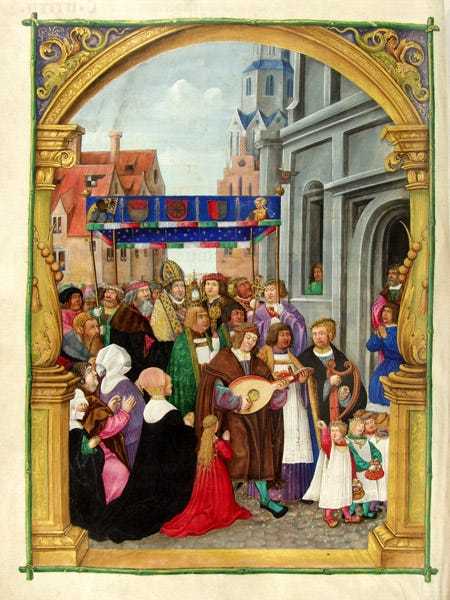


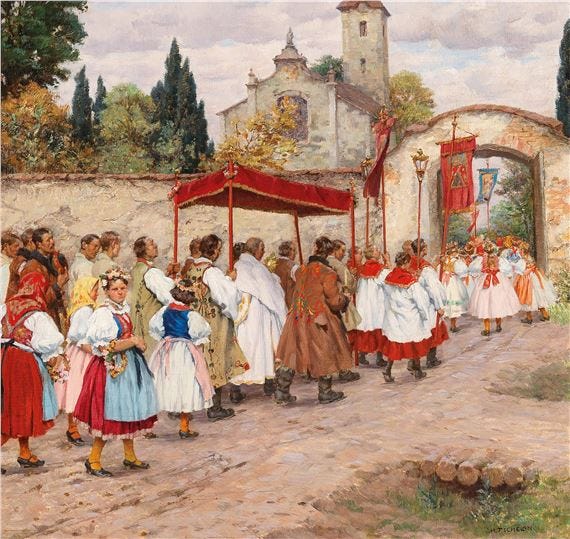

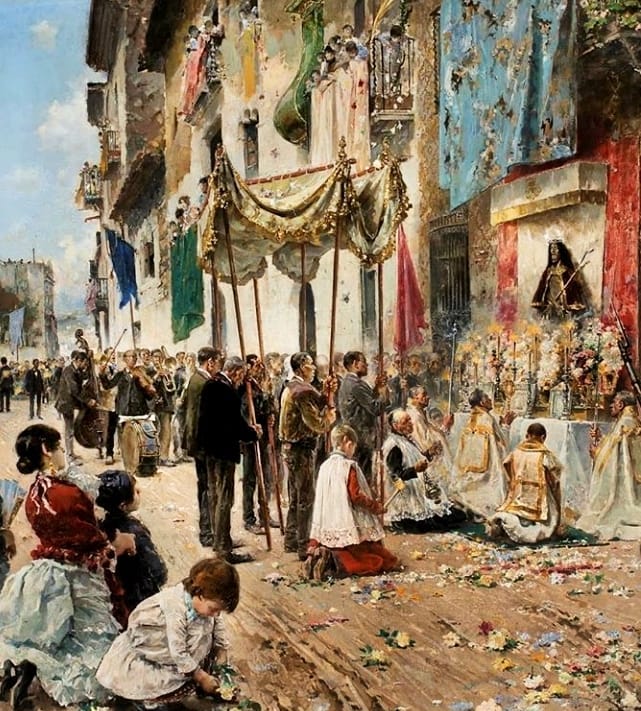

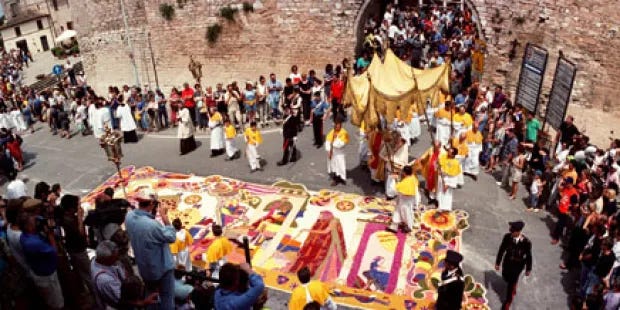
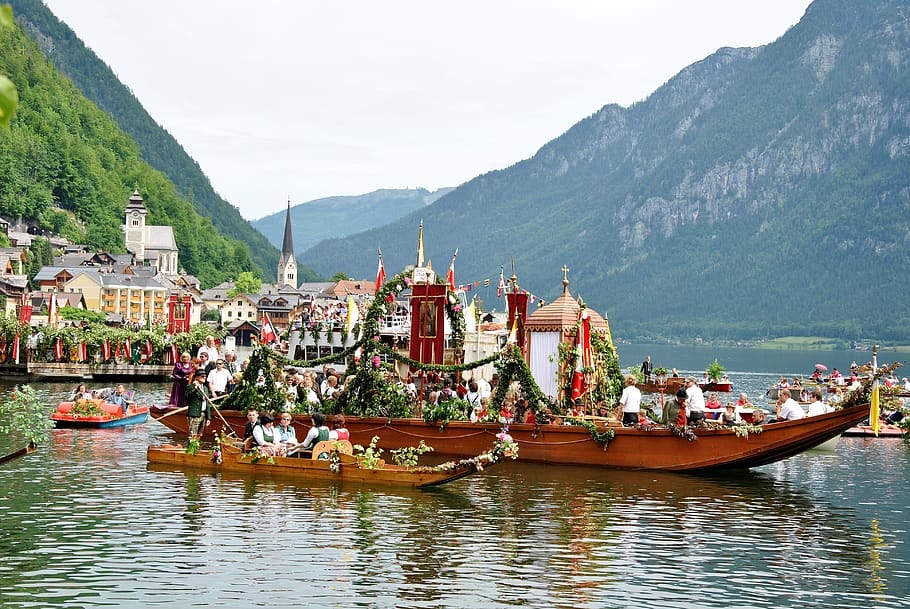

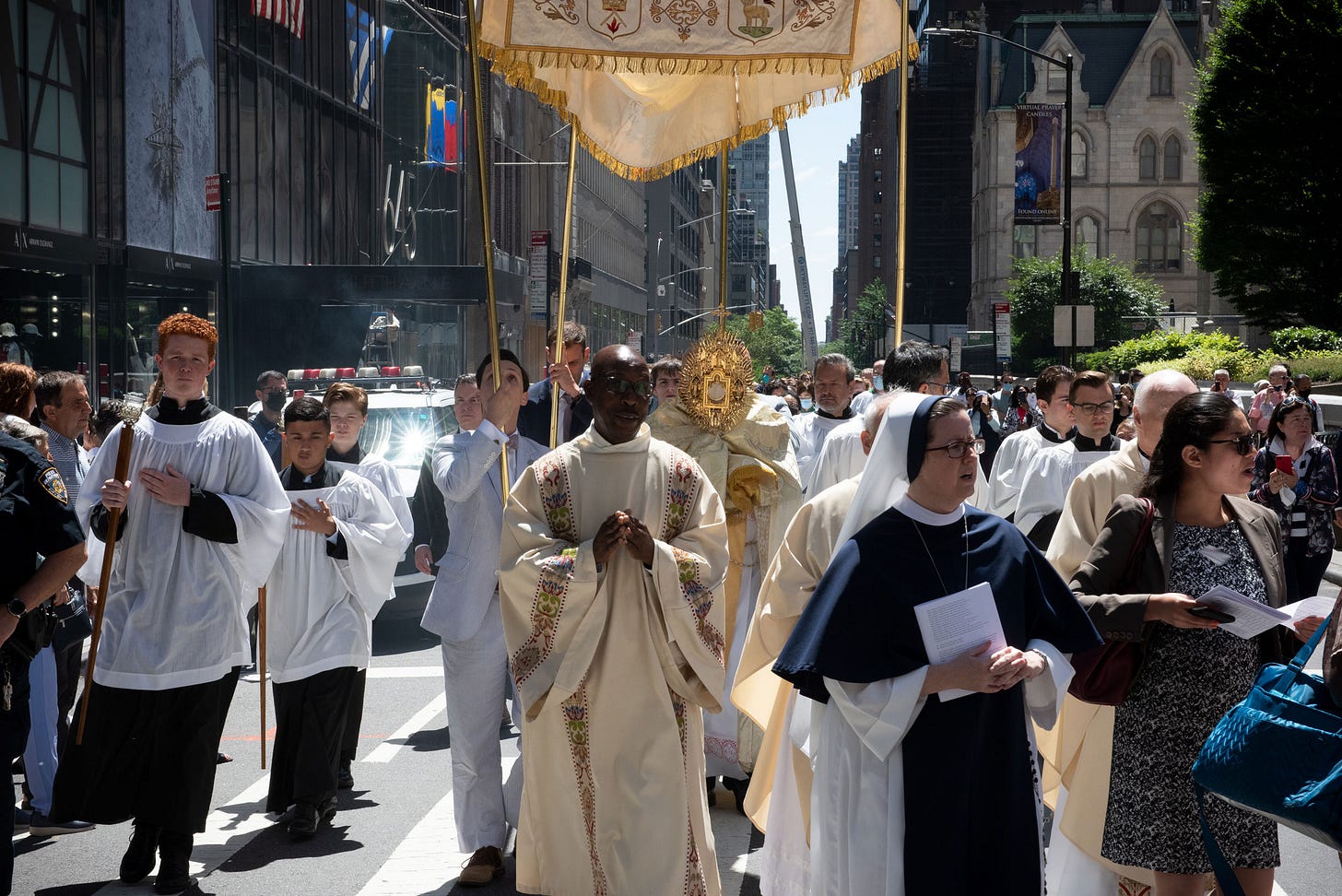
Excellent collection and descriptions. A well-done research job. Congratulations.
"Body and blood of my God, I adore you, present in the Eucharist, at the same time symbol and leaven of unity between Christ and the faithful, who feed on it."
I was in Spain walking the Camino on Corpus Christi last year. Absolutely beautiful